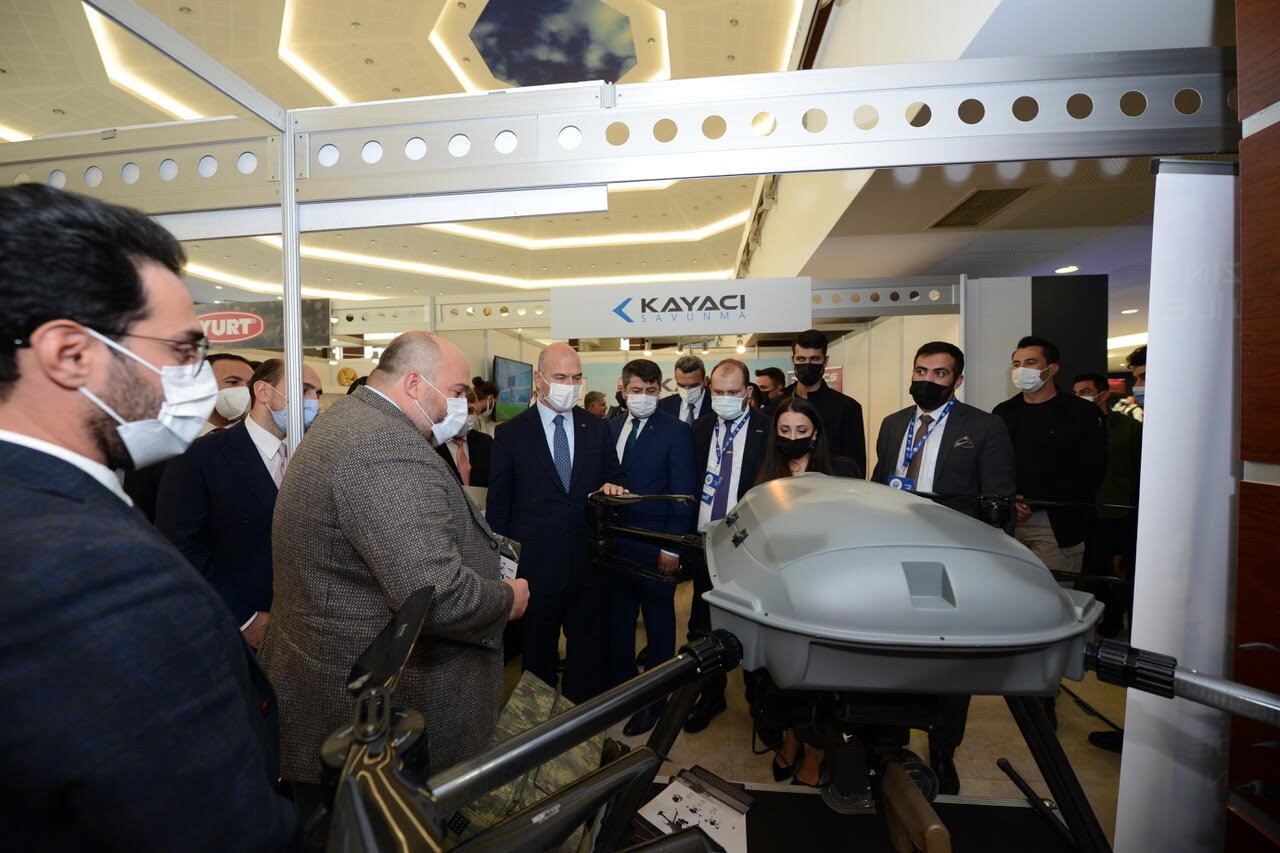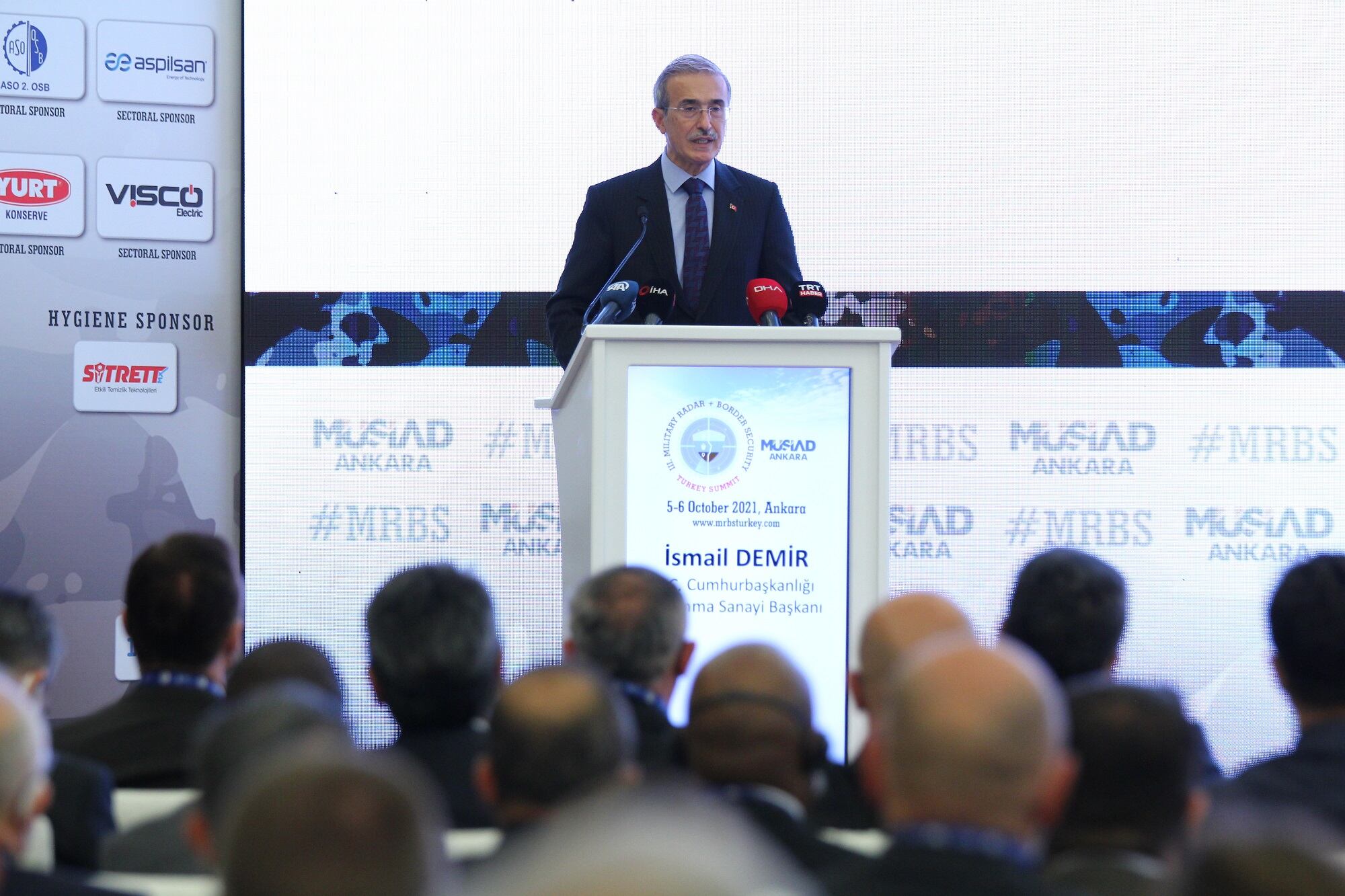ANKARA, Turkey — More than 100 defense companies from around the world descended on Turkey this month as the nation eyes modern solutions to enhance its border protection capabilities.
Attendees of the third Military Radar and Border Security Summit, which took place Oct. 5-6 in Ankara, primarily discussed options to defend against drone assaults using lasers, jamming, kamikaze drones and sensors.
The local Independent Industrialists and Businessmen Association hosted the event, which saw 110 defense and aerospace companies from more than 20 countries showcase their products. Additionally, high-level officials, including ministers, ambassadors and representatives from the defense industry, attended MRBS.
Turkey’s top procurement official, Ismail Demir, underlined the importance of 24/7 monitoring of the country’s border to prevent unauthorized refugee crossings, terrorist activity and smuggling. “For continuous monitoring and surveillance, integrated security solutions, including sophisticated electronic sensor systems, are required in this context. [The Presidency of Defence Industries] will continue to work in this field in accordance with the needs and expectations of user authorities,” he said in a speech at the summit.
Defense News spoke to the senior member of MRBS’ organizing committee, Koray Tuncer, about the event’s highlights.
“The main goal of MRBS is to bring the most recent developments in border security to the forefront. We also aim to provide a platform for those who manufacture the most recent technologies in this field to meet with senior decision-makers and technology experts in the armed forces, gendarmerie and police. Developing export opportunities is one of the purposes of this summit,” Tuncer said.
He added that contracts and memorandums of understanding were signed during the summit, but he was unable to discuss the deals in detail due to security concerns.
Tech trends
Turkish defense analyst Ozgur Eksi told Defense News that unmanned technology as well as soft- and hard-kill measures against drones dominated the summit.
“The security of military forces serving along the border was the most discussed topic at the event. Drones and manned assaults are the two main sorts of threats to the border units. Unmanned threats are primarily improvised UAVs employed for reconnaissance or attack objectives by terrorist organizations. These are small-sized, short-range devices that are becoming increasingly resistant to jamming, are quiet due to their electric motor and use simple autopilots. As a result, they are incredibly difficult to detect, particularly at night,” explained Eksi, who also founded news outlet TurDef.

For instance, he said, Turkish companies Havelsan and Transvaro developed an integrated detection system that employs several sensors — using radars, electro-optical systems and related software — to provide area protection against manned and unmanned threats.
Another key topic of the summit was the use of vertical-takeoff-and-landing drones for transferring supplies to border forces.
“There may be some risks associated with the shipment [to] such units by land, particularly in places where a terrorist threat exists. Transportation within the capacity of VTOL UAVs will ensure faster and safer logistics support, as well as support reconnaissance and surveillance tasks during deployment,” Eksi said.
Also vital to effective border security is coordination among forces through actions and communication. Among some of the products on display at MRBS were network-based systems meant to fulfill that requirement and tackle asymmetric threats.
Local company Meteksan Defence, which created technology already fielded by border security forces, has been partnering with other businesses to meet government needs. Burak Akbas, the company’s sales, marketing and corporate reputation director, specifically pointed to the Retinar radar system currently under use for human detection and recognition in border regions. Based on that technology, Meteksan has taken its radar and combined it with a machine gun made by local firm Unidef.
Investments
Turkey’s investments along its border have primarily focused on air and ground surveillance to fill detection and security gaps. Its wall created along the Iran border is supported by electro-optical sensors, radars and UAVs to combat illegal immigration and drug smuggling.
Turkey’s largest defense company, Aselsan, provided the Midas detection system, which uses underground fiber-optic cables to detect, analyze and share information on border violations. Its acoustic detection capability also monitors border crossing attempts via underground tunnels.

The government also procured Aselsan’s Karagoz aerostat surveillance system for the southern Hatay province across from Syria’s northwestern city of Idlib. The system can scan an area of 3 square miles with its mounted wide-area surveillance camera.
Additionally, Turkey’s Interior Ministry recently awarded Ares a contract for 122 coastal defense boats. The shipyard completed trials and began mass production this month.
The government also purchased 57 Ates armored vehicles from local business Katmerciler, as well as 82 Cobra II armored vehicles from Otokar. The European Union’s funding mechanism “Instrument for Pre-Accession Assistance” paid for these vehicles. Between 2014 and 2016, the EU provided Turkey with about €158 million (U.S. $184 million) for border security.
Tayfun Ozberk is a Turkey correspondent for Defense News.








